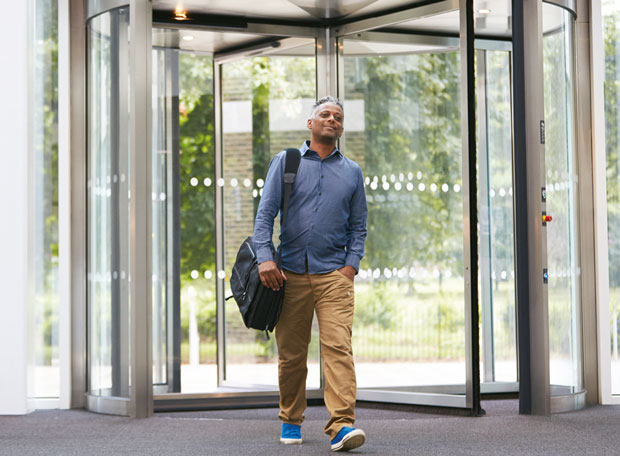As debates continue over the efficacy of hybrid work patterns, Madeleine Ford delves into the challenges of ensuring the wellbeing of workers, wherever and however they work
While a recent survey by a flexi-office provider claims hybrid workers who go to their workplace on average three- or four-days a per week report the highest level of wellbeing, contradictory research suggests home working is more beneficial to health and should be embraced. Considering these conflicting reports, how can employers juggle the needs of employees to ensure they are happy, healthy and productive in a hybrid working world?
Wellbeing, as described by Ellie Caley, Senior Workplace and Wellbeing Consultant at ART Health Solutions, is holistic and refers to the “mental, physical, emotional, cognitive, and social health of an individual” both in their physical workplace and within their role. She explains that according to the psychological theory of self-determination all humans require three basic psychological needs to drive motivation, personal growth and a positive sense of wellbeing.
These are: autonomy, competence and relatedness – personal freedom over where you work and how you work, growth opportunities that allow you to exceed personally and professionally, and the opportunity to build meaningful purpose and connections with both your role and with colleagues.
In this post-pandemic world, home and hybrid working are established as regular working patterns for many of the country’s workforce. Increasingly however are discussions about whether hybrid and remote work are the right choice for wellbeing, alongside frequent stories about businesses mandating a return to the office five days a week. The question is, how can employers find a solution that is right for both the organisation and promotes the wellbeing of employees?
NOT ONE SIZE FITS ALL
It is important to recognise that there is never a one-size-fits-all solution to wellbeing at work. It begins with employers recognising that each of their employees is an individual with different wants and needs that enable them to function at the best of their ability, while also feeling cared for and connected. Additionally, it is about optimising both the employee’s needs and the organisation’s goals to create an environment and structure that works for all.
Neil Pennell, Chair of the BCO’s Technical Affairs Committee, says the BCO’s Guide to Fit-Out emphasises that embracing hybrid working can empower organisations and their people to be more productive, enhancing wellbeing by providing the flexibility to choose the best location for each task.
The responsibility of employers in ensuring the health and safety of home workers is
well known, but as Phil Pinnington, Head of Audit and Consultancy at the British Safety Council suggests, perhaps there is a lower level of understanding among employers, line and HR managers and safety practitioners about how to “effectively support the mental and physical health of home/ hybrid workers, help them to motivate and organise themselves and encourage them to maintain a good work-life balance”.
Hybrid or remote working presents a great opportunity for individuals to lead a potentially more balanced life. A survey from the International Workplace Group (IWG) found that hybrid workers cited benefits such as better quality of sleep, more exercise, healthier meal preparations and better overall health. However, depending on the individual, hybrid work can just as easily be isolating and sedentary as it can be advantageous, and this is highly dependent on the support provided by an employer.
SUPPORTING EMPLOYEES IN A HYBRID WORKING WORLD
It is important that employers identify key wellbeing challenges in their workplaces by understanding what matters most to their employees. While there are many benefits to hybrid working as found in many studies, it is still crucially important for employers to remember that home workers may still experience feelings of isolation or disconnection due to the lack of social contact. Individuals may struggle to manage their time and be tempted to work longer hours. For instance, although no commute can be seen as a great benefit of working from home, without the travel time some might find it hard to decompress and switch off after a day’s work.
This is why it is critical that employers ensure they are monitoring the wellbeing and mental health of home and hybrid workers. According to Pinnington, the best ways of achieving this include regular one-to-ones and team’s discussions (virtually and face-to-face if possible), and creating space for open conversations about workloads, working hours, stress, changes at work, and making any occupational support easily accessible. Also, encouraging employees to take breaks in nature, either with a walk or other exercise, improves health conditions related to sedentary activity.
Pennell also points out that while employees can control their personal space at home, when returning to the office they can be more aware of noise and activity, making access to smaller, quieter spaces important.





